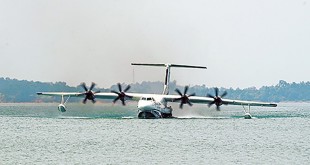Controlled Flight into Terrain (CFIT) is the #2 leading cause of General Aviation fatal accidents involving the loss of life. There have been over 9,000 deaths due to CFIT since the introduction of commercial jets. Between 2000 and 2009 approximately 961 people died worldwide as a result of CFIT, the second largest cause of aircraft accident fatalities.
CFIT occurs when the aircraft is under the control of the pilot(s), there is an in-flight collision with terrain, water, or obstacles and the pilot(s) have little or no awareness of the impending collision. CFIT normally occurs at cruise or maneuvering speeds.
For CFIT, the greatest concern is a loss of ‘place information’. Once a pilot’s mental picture of where they are at present, and where they will be in the future diminishes, safety becomes compromised. This is particularly crucial during those phases of flight when terrain clearance is unavoidably reduced (e.g. initial climb and approach). Reportedly, more than two-thirds of all CFIT accidents result from a loss of vertical situational awareness or an altitude error”.
Satellite Based Augmentation Systems (SBAS) deliver error corrections, extra ranging signals (from the geostationary satellite) and integrity information for each GPS satellite being monitored. Like GBAS it also augments GPS signals to provide aircraft with very precise positioning guidance, both horizontal and vertical.
However SBAS differs from GBAS in that it provides GPS integrity monitoring via satellites, rather than from the ground and potentially provides coverage for a wider geographical area.
Currently SBAS systems in operation that are certified for APV approaches – the US WAAS, and European EGNOS which covers the majority of the European Union (EU), along with some neighbouring countries and regions.
Several countries have implemented their own Satellite-based Augmentation System. Japan: Multi-functional Satellite Augmentation System (MSAS) and India: GPS and GEO Augmented Navigation (GAGAN). SBAS systems in development are China: Satellite Navigation Augmentation System (SNAS); South Korea: Wide Area Differential Global Positioning System (WADGPS) and Russia: System for Differential Corrections and Monitoring (SDCM)
Satellite Based Augmentation Systems
A Satellite-based Augmentation System (SBAS) is a civil aviation safety-critical system that supports wide-area or regional augmentation – even continental scale – through the use of geostationary (GEO) satellites which broadcast the augmentation information. A SBAS augments primary GNSS constellation(s) by providing GEO ranging, integrity and correction information. While the main goal of SBAS is to provide integrity assurance, it also increases the accuracy with position errors below 1 meter (1 sigma).
The ground infrastructure includes the accurately-surveyed sensor stations which receive the data from the primary GNSS satellites and a Processing Facility Center which computes integrity, corrections and GEO ranging data forming the SBAS signal-in-space (SIS). The SBAS GEO satellites relay the SIS to the SBAS users which determine their position and time information. For this, they use measurements and satellite positions both from the primary GNSS constellation(s) and the SBAS GEO satellites and apply the SBAS correction data and its integrity.
Low orbit navigation system to help unmanned vehicles
Chinese researchers are developing a satellite navigation system to assist the development of unmanned vehicles. The low orbit Satellite Based Augmentation System (SBAS) is developed by China Aerospace Science and Technology Corporation.
The system is based on a low orbit micro-nano satellite that was launched together with the fourth Fengyun-III meteorological satellite in November 2017. The low orbit navigation satellite can conduct high accuracy positioning down to the centimeter level in five minutes.
High-accuracy positioning on the ocean and across remote mountainous areas will be helped by the low orbit SBAS, which can also act as ground observation stations.
The SBAS is considered the best choice for unmanned vehicles, since it has the advantages of lower costs and global coverage. The low orbit SBAS is also expected to be applied in agricultural drones and landslide monitoring.
 International Defense Security & Technology Your trusted Source for News, Research and Analysis
International Defense Security & Technology Your trusted Source for News, Research and Analysis
